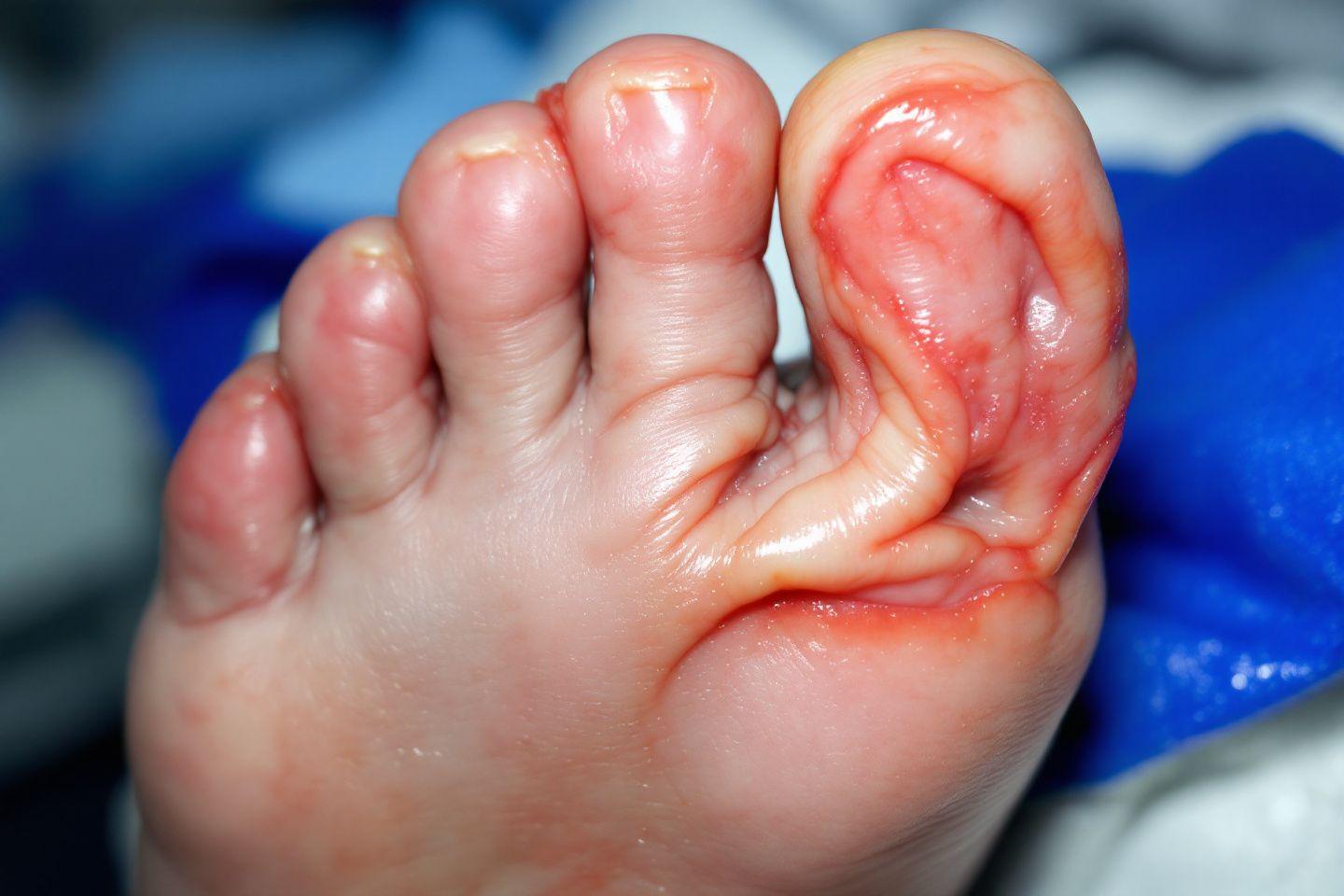Article at a Glance
A swollen, red, and painful toe can signal a variety of medical conditions requiring special attention.
- Various causes: gout, skin infections, physical trauma, or dermatological conditions
- Distinctive signs: intense redness, visible swelling, local warmth, and characteristic pain
- First aid: rest, elevate the foot, apply ice, and over-the-counter pain relievers
- Medical consultation: necessary if symptoms persist for more than 48 hours or are accompanied by fever
- Special attention for people with diabetes who should regularly consult a doctor.
A swollen, red, and painful toe can be a sign of various medical problems. This condition affects many people and often causes considerable discomfort in daily activities. Recognizing the symptoms and identifying potential causes allows for quick and effective action. Throughout this text, we examine the common causes of an inflamed toe, how to visually identify them, and what steps to take to relieve the pain.
Main causes of a swollen and red toe
An inflamed toe can result from a variety of conditions, ranging from minor injuries to more serious medical conditions. Understanding these causes is the first step toward appropriate treatment.
Joint inflammation is one of the common causes. Gout, a form of inflammatory arthritis, particularly affects the big toe. This condition causes painful attacks characterized by significant swelling and intense redness. The big toe becomes extremely sensitive, to the point that even the touch of a sheet can be unbearable.
Skin or nail infections are also common sources of problems. An ingrown toenail can become infected and cause a whitlow, a painful bacterial infection. These infections manifest as redness, swelling, and sometimes pus discharge around the affected area.
Physical trauma such as bumps, falling objects, or false movements can lead to painful bruises. A broken toe causes immediate swelling, a bluish or purplish color, and intense pain. Although less serious, claw toes can also cause chronic inflammation when they rub against shoes.
Certain dermatologic conditions such as eczema or psoriasis can affect the toes and cause redness, swelling, and peeling. Other conditions, such as rheumatoid arthritis, affect the toe joints, creating chronic inflammation.

Visually Identifying Symptoms
Visually recognizing the symptoms of a problematic toe often helps identify the underlying condition. Manifestations vary depending on the cause, but certain visual signs remain characteristic.
In acute gout, the toe appears severely swollen and bright red to purple in color. The skin appears tight, shiny, and sometimes flakes during the healing phase. Gouty attacks typically affect the metatarsophalangeal joint of the big toe.
A bacterial infection such as a whitlow manifests as a circumscribed area of intense redness, localized swelling, and sometimes the presence of pus or fluid under the skin. Local warmth is a hallmark sign of infection.
Here are the main visual signs to look for:
- Intense redness or discoloration ranging from pink to dark purple
- Visible swelling compared to other toes
- Deformity or change in normal alignment
- Blisters, blisters, or areas of damaged skin
- Nail changes (discoloration, thickening)
Traumas such as fractures or sprains often produce a subungual hematoma (blood under the nail), giving it a black or dark blue color. Swelling can extend beyond the affected toe in severe cases.
People experiencing toe numbness accompanied by inflammation should be especially vigilant, as this combination may indicate significant vascular or neurological problems.
| Condition | Visual Appearance | Associated Symptoms |
|---|---|---|
| Gout | Bright red, shiny, swollen | Severe pain, Heat, extreme tenderness |
| Infection | Red, swollen, sometimes visible pus | Pulsing, heat, throbbing pain |
| Trauma | Blue/purple, swollen, bruise | Immediate pain, difficulty moving |
| Frostbite | Red or white, then blue/purple | Tingling, numbness, burning sensation |
Relief Measures and Treatment
When dealing with a swollen and painful toe, several treatment approaches can be considered depending on the underlying cause. Simple measures can often relieve symptoms while waiting for medical attention.
Rest and elevating the foot are the first steps to take. Elevating the affected limb above heart level helps reduce swelling by facilitating venous return. This simple action can significantly reduce edema within a few hours.
Applying ice to the painful area soothes inflammation and partially numbs the pain. Wrap the ice in a thin cloth to avoid direct contact with the skin and apply it for 15-20 minutes every two hours.
For more severe pain, over-the-counter pain relievers such as ibuprofen or acetaminophen can be effective. Ibuprofen has the advantage of also acting on inflammation, but it is not suitable for everyone.
In cases of bacterial infections, antibiotics prescribed by a doctor are usually necessary. Skin or nail infections rarely heal without proper treatment and can worsen or spread.
For people experiencing big-toe numbness associated with inflammation, it is especially important to consult a healthcare professional promptly.
Here are the steps to follow, in chronological order:
- Assess the severity of visual and pain symptoms
- Apply conservative measures (rest, ice, elevation)
- Use over-the-counter medications if necessary
- Consult See a doctor if symptoms persist for more than 48 hours.
- Strictly follow the prescribed treatment.
Preventing recurrences involves wearing appropriate footwear, practicing good foot hygiene, and managing underlying medical conditions such as diabetes or cardiovascular disease. For those prone to gout, avoiding certain purine-rich foods can significantly reduce attacks.
When to See a Healthcare Professional
While some cases of swollen and red toes can be treated at home, others require prompt medical attention. Recognizing these situations helps prevent potentially serious complications.
Immediate medical attention is required in cases of severe pain that makes it impossible to put weight on the foot, fever associated with local symptoms, or the appearance of red streaks extending up toward the ankle. These signs may indicate a spreading infection.
People with diabetes should always seek medical attention for any foot problem, even if it seems minor. Their decreased sensitivity can mask serious infections, and their reduced healing capacity increases the risk of complications.
If pain persists despite relief measures for more than 48 hours, or if swelling gradually increases, a medical evaluation is necessary. Likewise, any persistent deformity or inability to move the toe warrants professional advice.
Medical imaging methods such as X-rays may be indicated to rule out a fracture in cases of trauma. In some cases, blood tests help identify the presence of systemic inflammation or infection.





Leave a comment
This site is protected by hCaptcha and the hCaptcha Privacy Policy and Terms of Service apply.